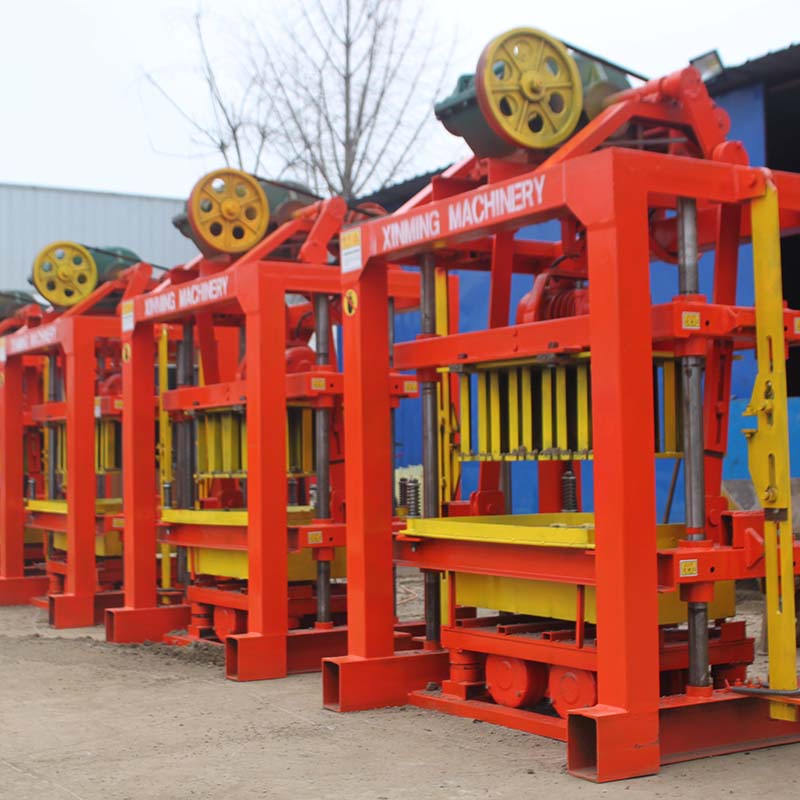
Construction is a cornerstone of human civilization, shaping the world we live in today.
Traditional construction methods, though effective, often come with challenges such as high labor costs, lengthy project timelines, and environmental concerns.
However, the advent of block making machines has brought about a significant shift in the construction landscape.
These machines have revolutionized the way buildings are erected, offering speed, efficiency, sustainability, and design versatility.
This essay explores the profound impact of block making machines on the construction industry, delving into four key aspects: mechanized production, cost-effectiveness, eco-friendly practices, and architectural possibilities.
Mechanized Production: Speeding Up the Construction Process
One of the most revolutionary aspects of block making machines is the mechanized production of building blocks.
Traditionally, bricks were made by hand, which was a labor-intensive and time-consuming process.
The introduction of block making machines has streamlined the production of blocks, significantly increasing the speed of construction.
These machines can churn out thousands of blocks per day, each one uniform in size and shape.
The automated process ensures consistent quality, reducing the need for manual labor and the time required to produce building materials.
As a result, construction projects can be completed in much shorter time frames, accelerating infrastructure development and meeting the demands of a rapidly growing world population.
Furthermore, the mechanized production process minimizes human errors, leading to enhanced precision in block manufacturing.
The uniformity of the blocks facilitates smoother construction, resulting in structurally sound buildings with reduced maintenance needs over time.
Cost-Effectiveness: Optimizing Resources and Reducing Expenses
The traditional construction process often involves significant material wastage due to variations in brick sizes and shapes.
This not only adds to the overall cost of construction but also puts unnecessary strain on natural resources.
Block making machines address this issue by optimizing material usage and reducing waste.
These machines allow for precise control over the composition and size of the blocks, resulting in minimal material wastage.
Moreover, some block making machines are designed to use alternative materials such as fly ash, which is a byproduct of coal combustion, or recycled concrete.
By incorporating such eco-friendly materials, construction projects can significantly reduce costs and environmental impact.
Additionally, the speed and efficiency of block making machines translate into reduced labor costs.
With fewer workers required for block production, construction companies can allocate their resources more efficiently, leading to overall cost savings.
This cost-effectiveness makes block making machines an attractive choice for projects with limited budgets and tight timelines.
Eco-Friendly Practices: Promoting Sustainable Construction
As the world faces the challenges of climate change and environmental degradation, the construction industry must embrace sustainable practices.
Block making machines play a crucial role in promoting eco-friendly construction methods.
By optimizing material usage and incorporating recycled materials, block making machines contribute to resource conservation and reduced carbon emissions.
Furthermore, the blocks themselves often possess better thermal and insulating properties, enhancing energy efficiency in buildings and reducing the need for additional climate control measures.
Some advanced block making machines even operate on renewable energy sources, such as solar power, making the entire block production process environmentally friendly.
This integration of sustainable practices not only benefits the environment but also aligns construction companies with the growing demand for green and eco-conscious buildings.
Architectural Possibilities: Unlocking Design Flexibility
Traditional brick construction limits architectural possibilities due to the constraints of manual labor and standardized brick shapes.
Block making machines, however, offer unparalleled design flexibility, opening up a world of architectural possibilities.
These machines can produce blocks of various shapes, sizes, and surface textures, empowering architects and builders to explore innovative and creative designs.
From curved walls to intricate facades, block making machines allow for the construction of unique and visually striking structures.
Additionally, specialized blocks with enhanced properties, such as sound insulation or earthquake resistance, can be manufactured with block making machines.
This adaptability to specific functional requirements ensures that construction projects can cater to diverse needs while maintaining a high standard of aesthetics.
Block making machines have emerged as a game-changer in the construction industry, transforming the way buildings are erected and redefining the construction landscape.
Their mechanized production process accelerates construction timelines, reduces labor costs, and ensures precision and uniformity in block manufacturing.
The optimization of resources and incorporation of eco-friendly materials promote sustainable construction practices, aligning the industry with the global call for environmental stewardship.
Moreover, block making machines offer architects and builders unparalleled design flexibility, encouraging the exploration of innovative and visually appealing architectural solutions.
As the demand for faster, cost-effective, and eco-friendly construction grows, block making machines are poised to play a pivotal role in building the future brick by brick.
Embracing these advancements, stakeholders in the construction industry can build a more sustainable, resilient, and architecturally diverse world for generations to come.
By leveraging the power of block making machines, we have the opportunity to create a brighter and more efficient future for construction, redefining the world one block at a time.
